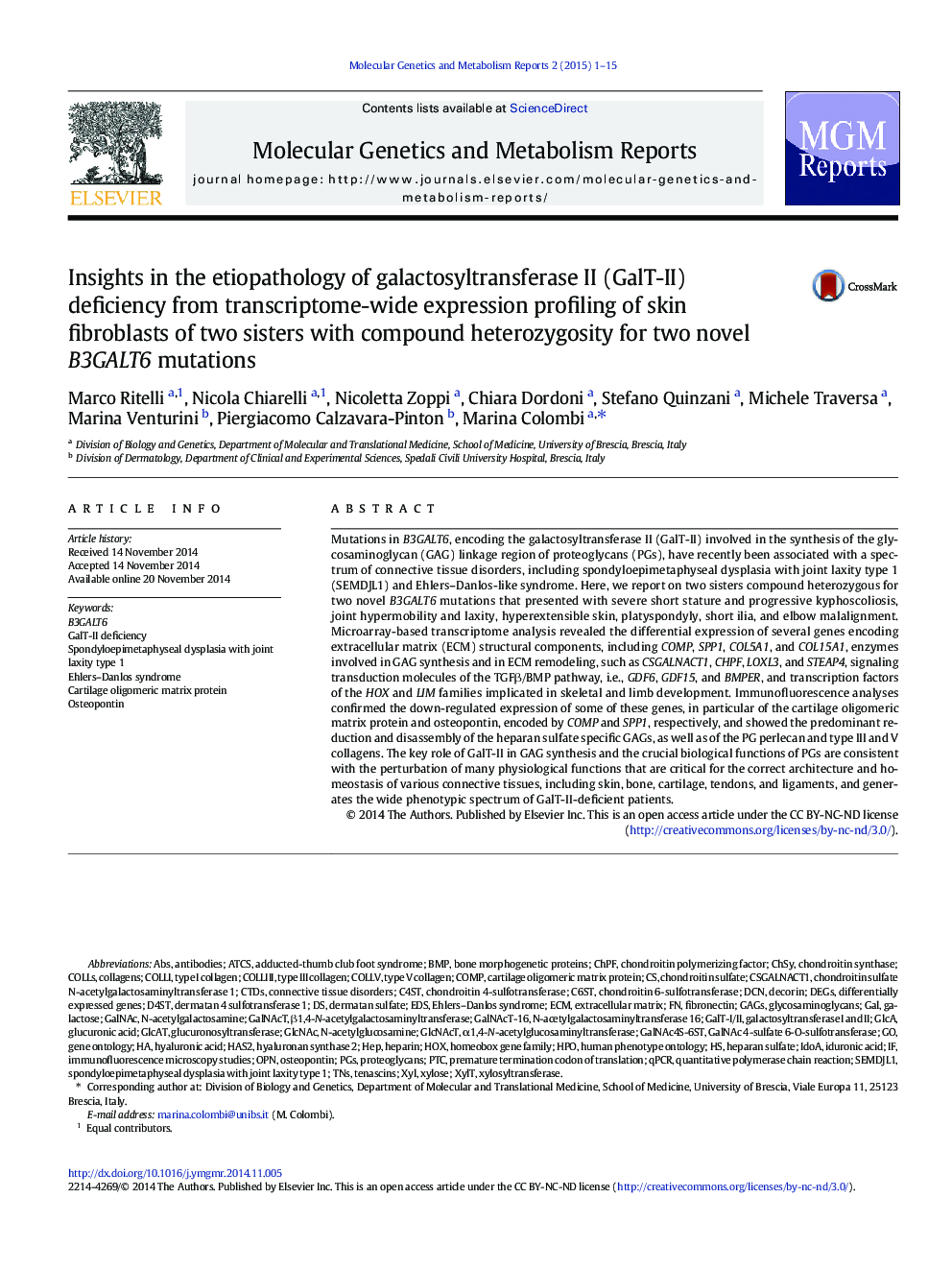| Article ID | Journal | Published Year | Pages | File Type |
|---|---|---|---|---|
| 2058944 | Molecular Genetics and Metabolism Reports | 2015 | 15 Pages |
•Clinical features/molecular characterization of two patients with spondyloepimetaphyseal dysplasia with joint laxity type 1•Identification of two novel B3GALT6 mutations•First report of transcriptome-wide gene expression profiling on GalT-II-deficient fibroblasts•Immunofluorescence studies of several ECM structural components in GalT-II-deficient cells•Enlargement of the knowledge on the GalT-II deficiency’s molecular pathogenesis
Mutations in B3GALT6, encoding the galactosyltransferase II (GalT-II) involved in the synthesis of the glycosaminoglycan (GAG) linkage region of proteoglycans (PGs), have recently been associated with a spectrum of connective tissue disorders, including spondyloepimetaphyseal dysplasia with joint laxity type 1 (SEMDJL1) and Ehlers–Danlos-like syndrome. Here, we report on two sisters compound heterozygous for two novel B3GALT6 mutations that presented with severe short stature and progressive kyphoscoliosis, joint hypermobility and laxity, hyperextensible skin, platyspondyly, short ilia, and elbow malalignment. Microarray-based transcriptome analysis revealed the differential expression of several genes encoding extracellular matrix (ECM) structural components, including COMP, SPP1, COL5A1, and COL15A1, enzymes involved in GAG synthesis and in ECM remodeling, such as CSGALNACT1, CHPF, LOXL3, and STEAP4, signaling transduction molecules of the TGFβ/BMP pathway, i.e., GDF6, GDF15, and BMPER, and transcription factors of the HOX and LIM families implicated in skeletal and limb development. Immunofluorescence analyses confirmed the down-regulated expression of some of these genes, in particular of the cartilage oligomeric matrix protein and osteopontin, encoded by COMP and SPP1, respectively, and showed the predominant reduction and disassembly of the heparan sulfate specific GAGs, as well as of the PG perlecan and type III and V collagens. The key role of GalT-II in GAG synthesis and the crucial biological functions of PGs are consistent with the perturbation of many physiological functions that are critical for the correct architecture and homeostasis of various connective tissues, including skin, bone, cartilage, tendons, and ligaments, and generates the wide phenotypic spectrum of GalT-II-deficient patients.
